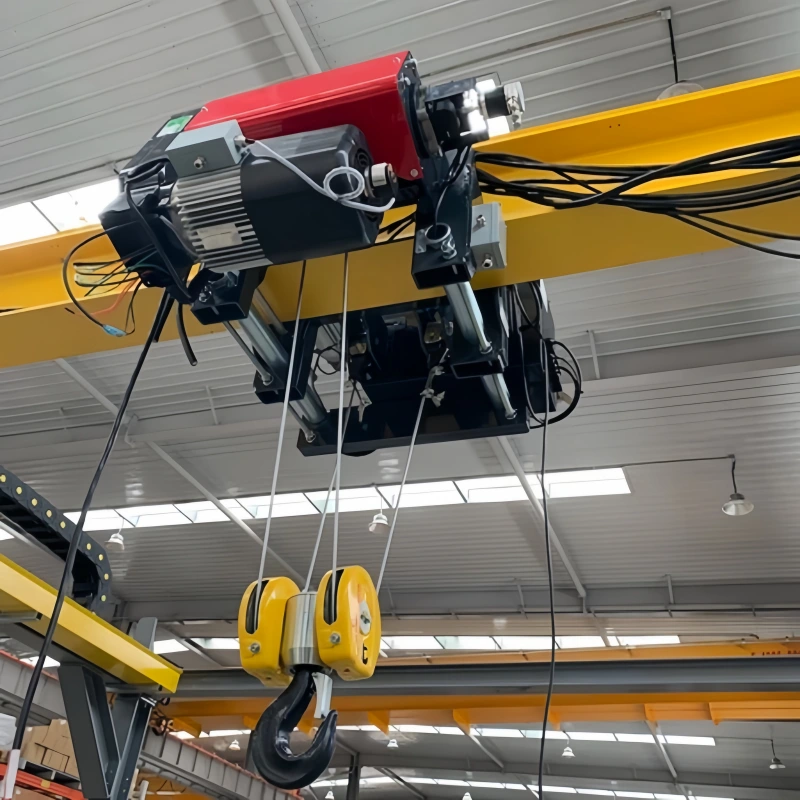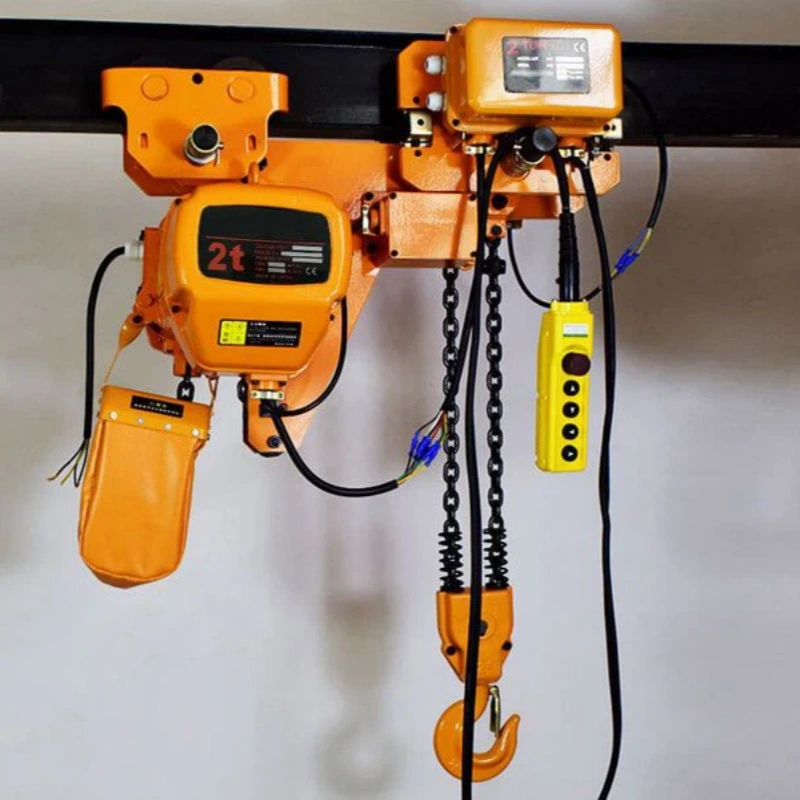Snap hooks help you create quick, reliable safety connections in many settings. You use them to snap onto anchor points and secure equipment with confidence. Understanding the different types, mechanisms, and materials keeps you safe and supports efficient work.
The right choice matters for both industrial and everyday tasks. Powerful Machinery stands out as a trusted provider of certified solutions that keep your operations safe and effective.
Key Takeaways
Understand the different types of snap hooks to choose the right one for your task. Each type serves specific needs, from light-duty to heavy-duty applications.
Select snap hooks made from appropriate materials based on your environment. Stainless steel is ideal for marine use, while aluminum is lightweight for climbing.
Always check the load ratings and safety standards of snap hooks before use. Using the wrong hook can lead to accidents or equipment failure.
Incorporate locking mechanisms for added safety in high-risk environments. Self-locking hooks prevent accidental opening under load.
Regularly inspect snap hooks for wear and damage. This practice ensures safety and extends the lifespan of your equipment.
Types of Snap Hooks
Snap hooks come in many types, each designed for specific tasks and environments. You can choose from a wide range of mechanisms and features to match your needs. Powerful Machinery manufactures certified snap hooks that meet strict industry standards, ensuring safety and reliability in every application.
Regular Snap Hooks
Regular snap hooks, also known as standard snap hooks, use a simple spring-loaded gate. You push the gate to open it and release to close. These spring hooks offer quick attachment and detachment.
You often use them for light-duty tasks, such as hanging tools or securing gear. Standard snap hooks provide a balance between ease of use and basic security.
Snap Hook with Eyelet
A snap hook with eyelet features a closed loop, or eyelet, at the base. This design allows you to attach ropes, chains, or cables securely. The eyelet keeps the connection stable and prevents twisting.
You find snap hook with eyelet types in marine, construction, and cargo handling settings. Powerful Machinery produces snap hook with eyelet models that meet international safety standards, making them ideal for demanding industrial environments.
Snap Hook with Screw Lock
Snap hook with screw lock types add an extra layer of security. You twist the locking sleeve over the gate to prevent accidental opening. This feature makes them suitable for safety-critical applications, such as climbing or lifting.
When you need a secure connection that will not open under load, snap hook with screw lock options deliver peace of mind.
Bolt Snaps
Bolt snaps use a button mechanism to open the gate. You press the button to release the spring and attach or detach items. These snap hooks are popular for fastening leashes, securing gear, or connecting equipment.
Bolt snaps offer quick operation, but you should use them where accidental pressing is unlikely. Powerful Machinery manufactures bolt snaps with precise tolerances for reliable performance in industrial settings.
Tip: Choose bolt snaps for applications where you need fast, one-handed operation.
Trigger Snaps
Trigger snaps feature a small lever that you pull to open the gate. This design allows for easy one-handed use. Trigger snaps help prevent accidental opening, making them a favorite for fashion accessories, camera straps, and some safety gear.
You benefit from their secure closure and smooth action. Powerful Machinery offers trigger snaps that combine durability with user-friendly operation.
Panic Snaps
Panic snaps allow for instant release, even under load. You pull the release mechanism, and the snap opens immediately. These snap hooks are essential in situations where you need to detach quickly, such as in marine or equestrian applications. Panic snaps provide safety and speed when every second counts.
Fixed-Eye Snaps
Fixed-eye snaps have a non-rotating loop at the base. This stable connection works well when you do not need rotation. You often use fixed-eye snaps in boating, rigging, or other settings where a steady link is important. The fixed eye keeps your rope or cable aligned and secure.
Swivel-Eye Snaps
Swivel-eye snaps include a rotating base, allowing the snap to turn freely. This feature helps prevent tangling and twisting of ropes or lines. Swivel-eye snaps are perfect for fishing, sailing, or any application where movement occurs. You gain flexibility and reduce the risk of knots or snags.
Snap Hook Type | Mechanism Description | Characteristics / Application Suitability |
|---|---|---|
Regular Snap Hooks | Spring-loaded gate, simple push-to-open mechanism | Quick attachment, general use, light-duty tasks |
Snap Hook with Eyelet | Closed loop (eyelet) at base for secure attachment | Stable connection, prevents twisting, ideal for ropes and cables |
Snap Hook with Screw Lock | Screw sleeve locks gate in place | Extra security, safety-critical applications |
Bolt Snaps | Button-operated spring gate | Fast operation, used for leashes and gear |
Trigger Snaps | Lever-operated gate for one-handed use | Prevents accidental opening, used in accessories and safety gear |
Panic Snaps | Instant-release mechanism | Quick detachment, used in marine and equestrian settings |
Fixed-Eye Snaps | Non-rotating loop at base | Stable connection, best for steady links |
Swivel-Eye Snaps | Rotating base allows movement | Prevents tangling, ideal for fishing and sailing |
All-Purpose Snaps | Versatile design, often combines features | General use, balance of security and flexibility |
Locking Snap Hooks | Locking mechanism (screw or twist) secures gate | Enhanced safety, used in lifting and climbing |
Heavy-Duty Snaps | Reinforced construction, certified for high loads | Industrial use, meets strict safety standards |
All-Purpose Snaps
All-purpose snaps combine features from different types. You can use them in many situations, from fishing to camping. Their versatile design lets you switch between tasks without changing hardware. All-purpose snaps give you flexibility and convenience.
Locking Snap Hooks
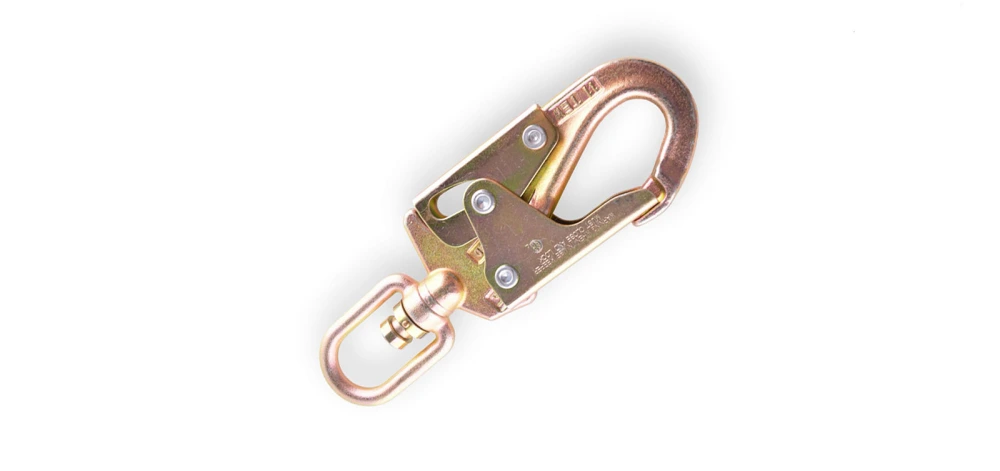
Locking snap hooks include a locking mechanism, such as a screw or twist lock, to secure the gate. You use locking snap hooks when safety is critical, like in lifting, rigging, or climbing.
These snap hooks prevent accidental opening and meet strict safety requirements. Powerful Machinery produces locking snap hooks that comply with international certifications, ensuring your operations stay safe.
Heavy-Duty Snaps
Heavy-duty snaps feature reinforced construction for high-strength applications. You rely on these snap hooks in industrial environments where loads are heavy and safety is vital.
Heavy-duty snaps must meet industry standards and carry certifications that prove their quality. Powerful Machinery manufactures heavy-duty snaps that pass rigorous testing, giving you confidence in demanding conditions.
Note: Always check for certifications when selecting heavy-duty snaps for industrial use. Powerful Machinery ensures every snap hook meets or exceeds global safety standards.
Snap hooks play a crucial role in many industries. By understanding the types and their unique features, you can select the right snap hook for your job. Powerful Machinery stands ready to supply certified, high-performance snap hooks and spring hooks for every application.
Materials and Construction
Choosing the right materials for snap hooks shapes their performance, safety, and lifespan. You need to consider how each material handles stress, weather, and daily wear. Let’s look at the most common options and how they fit different jobs.
Stainless Steel
Stainless steel stands out for its strength and resistance to rust. You often see grades 304 and 316 in marine and outdoor settings. These grades handle saltwater and harsh weather without corroding. If you work in wet or corrosive environments, stainless steel snap hooks give you long-lasting durability and peace of mind.
Aluminum
Aluminum snap hooks offer a lightweight solution. You can carry them easily and use them where weight matters, such as climbing or camping. While aluminum provides good strength, it does not match the corrosion resistance of steel. You should avoid using aluminum snap hooks in saltwater or highly corrosive areas.
Brass
Brass snap hooks resist corrosion and look attractive. You find them in marine hardware, decorative uses, and some electrical applications. Brass offers moderate strength and works well where you need both function and style.
Die-Cast Zinc
Die-cast zinc snap hooks provide a cost-effective choice. They resist rust and work well for light-duty tasks. You might use them for keychains, bags, or indoor gear. Zinc does not offer the same strength as steel or aluminum, so you should avoid using it for heavy loads.
Carbon Steel
Carbon steel snap hooks deliver high strength and toughness. You see them in industrial lifting, rigging, and construction. Carbon steel needs a protective coating to prevent rust, especially outdoors. When you need maximum load capacity, carbon steel is a reliable choice.
Powerful Machinery uses only certified materials for every snap hook. You benefit from products that meet ISO 9001 and other international standards for quality and safety.
Material Impact
Your choice of materials affects more than just appearance. It changes the weight, strength, and durability of your snap hooks. For example, stainless steel gives you the best corrosion resistance, while aluminum keeps things light. Carbon steel handles heavy loads, and brass or zinc work for lighter or decorative tasks.
Material | Characteristics | Applications |
|---|---|---|
Stainless Steel | High strength, excellent corrosion resistance | Marine, outdoor, industrial |
Aluminum | Lightweight, moderate strength | Climbing, camping, sports |
Brass | Corrosion-resistant, decorative | Marine, electrical, accessories |
Die-Cast Zinc | Rust-resistant, economical | Light-duty, indoor, accessories |
Carbon Steel | Very strong, needs coating for rust | Lifting, rigging, construction |
You should always check for certifications like ISO 9001 when selecting snap hooks. Powerful Machinery ensures every product meets strict international standards so that you can trust their snap hooks in any environment.
Snap Hook vs Carabiner
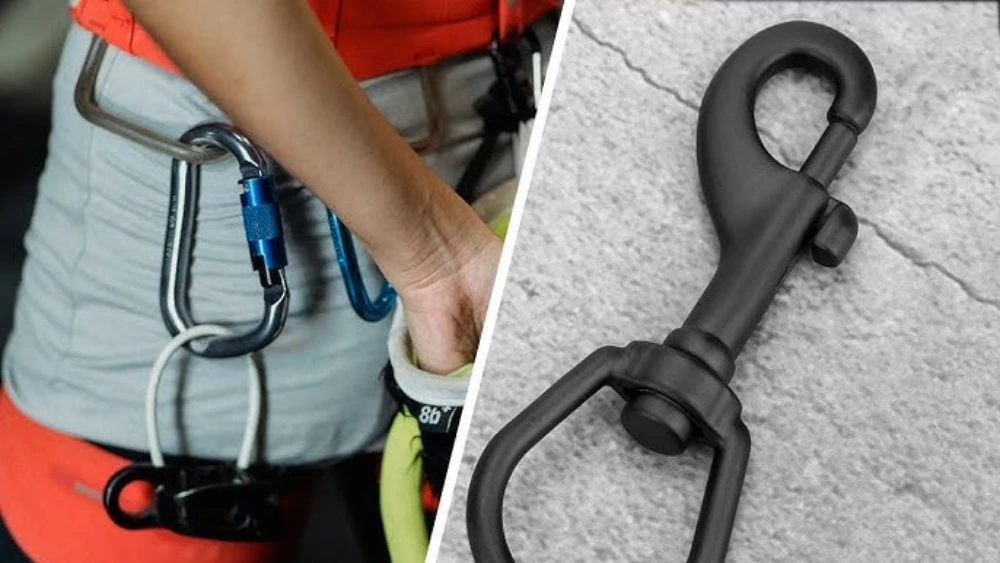
Design Differences
You notice clear differences when you compare a carabiner snap hook to a regular snap hook. Carabiners have a spring-loaded gate that opens by pushing the gate away from the main body.
Snap hooks open by pushing the spring gate toward the loop. Carabiners are built for strength and often feature a solid, oval or D-shaped frame. Snap hooks usually have a curved or hook-shaped body, which makes them easier to clip onto everyday items.
Feature | Carabiners | Snap Hooks |
|---|---|---|
Gate Mechanism | Spring-loaded, opened by pushing the gate away | Opened by pushing the spring gate toward the loop |
Strength | More robust, suitable for climbing and heavy loads | Ideal for clipping light items only |
Intended Use | Specialized for high-load applications | Versatile for various everyday tasks |
You use carabiners in industrial settings where you need maximum strength. Snap hooks work best for lighter tasks, such as securing gear or connecting ropes.
Mechanism Differences
The way you open and close these connectors affects safety and usability. Carabiners release with inward pressure, while snap hooks release with downward pressure.
The nose design of carabiners is crucial for safety. Modern carabiners use keylock designs that eliminate snag points, making clipping and unclipping safer. Traditional carabiners can snag on ropes, which poses a risk. Snap hooks do not have this feature, so you must check for smooth operation before use.
Carabiners are common in professional climbing and safety-critical applications.
Snap hooks are popular in household, boating, and general industrial uses.
Tip: Always inspect the gate mechanism before using any connector in safety-critical applications.
Load Ratings
You must pay attention to load ratings when choosing between a carabiner snap hook and a snap hook. Carabiners are rated for much higher loads. Many carabiners used in climbing and industrial work have ratings of 20 kN or more.
Some carabiners for hot air balloons are rated at 2.5 tonnes, 3 tonnes, or even 4 tonnes.
Load-bearing screw-gate carabiners often have a safe working load of 5 kN or more, which means they can hold over 500 kg. When closed and loaded end-to-end, carabiners can reach 23-24 kN. On the minor axis, they hold 7-8 kN, and with the gate open, they support 6-9 kN.
Snap hooks are designed for lighter loads. You use them for tasks that do not require high strength, such as attaching accessories or securing light equipment. Powerful Machinery offers certified products for safety-critical applications, so you can trust their carabiners and snap hooks in demanding industrial environments.
Applications of Snap Hooks
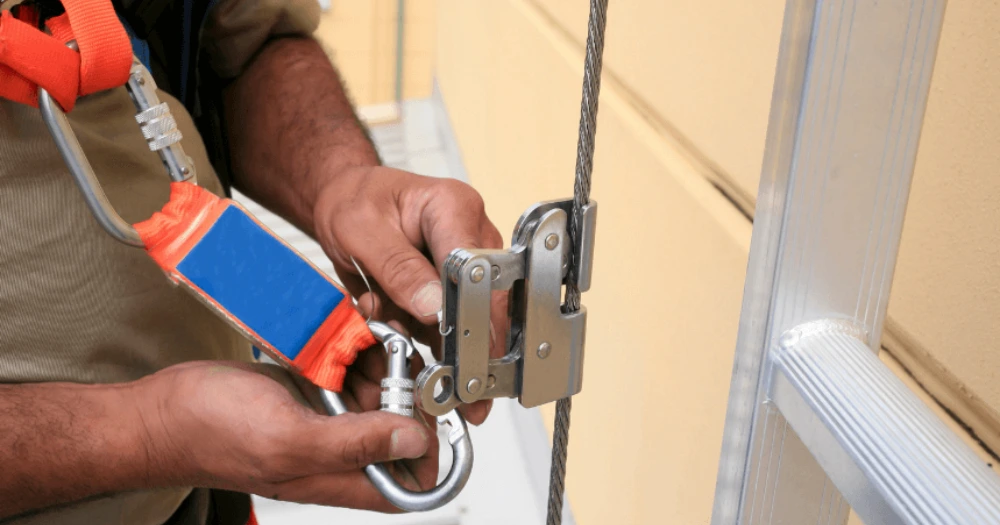
Snap hooks serve many industries because they offer quick, secure connections for a wide range of applications. You find them in everything from construction sites to fashion accessories. Each type of snap hook fits a specific need, making your work safer and more efficient.
Rigging and Construction
You use snap hooks in rigging and construction to secure tools, attach safety harnesses, and manage cables. Stainless steel snap hooks handle heavy-duty lifting and resist wear, which is important for industrial applications.
Locking snap hooks add extra safety when you work at heights. Powerful Machinery supplies certified rigging hardware that meets strict standards, so you can trust your equipment on the job.
Tip: Always check for locking mechanisms when you need extra security in rigging.
Marine Hardware
In marine environments, snap hooks attach fenders, buoys, and anchor chains. You also use them to secure vessels to docks. Stainless steel snap hooks resist corrosion from saltwater, which keeps your gear reliable.
Swivel-eye snap hooks prevent ropes from twisting, making them perfect for marine applications. Powerful Machinery offers marine-grade snap hooks that last in harsh conditions.
Industrial Safety
You rely on snap hooks for industrial safety. They connect safety harnesses, lifelines, and fall protection gear. Locking snap hooks prevent accidental opening, which protects you in critical situations. Certified snap hooks from Powerful Machinery ensure you meet safety standards in every industrial setting.
Outdoor and Sports
Snap hooks play a big role in outdoor and sports activities. You use them to attach gear, set up tents, or secure equipment during climbing. Lightweight aluminum snap hooks work well for camping and hiking. Trigger snaps and bolt snaps allow for quick, one-handed use, which is helpful when you need speed and convenience.
Pet Handling
Pet owners use snap hooks for leashes, collars, and harnesses. Swivel-eye snap hooks stop leashes from tangling, giving your pet more freedom. You can trust these snap hooks for both light to heavy duty applications, depending on your pet’s size.
Fashion Accessories
Fashion designers use snap hooks in bags, belts, and jewelry. All-purpose snap hooks add style and function to accessories. Brass and zinc snap hooks give a decorative look while still providing a secure snap.
Industry | Application |
|---|---|
Construction | Securing tools and safety harnesses, managing rigging systems, attaching cables and wires. |
Marine | Attaching fenders, buoys, anchors, and securing ropes and rigging. |
Cargo Handling | Used for securing loads and facilitating quick attachment and detachment. |
Snap hooks offer versatility, quick-release action, and strong performance across many fields. Powerful Machinery delivers certified solutions for construction, marine, and cargo handling, helping you stay safe and efficient in every application.
Common Uses of Snap Hooks
Lifting and Rigging
You see snap hooks everywhere in lifting and rigging. Workers use them to connect slings, chains, and cables to loads. In construction, you attach heavy equipment or materials quickly and safely. Rebar snap hooks play a key role in fall protection systems.
They connect directly to anchor points, which removes the need for extra connectors. You must always check that the snap hook is set up correctly to avoid hazards from improper loading or weak anchor points.
Powerful Machinery offers a full range of certified lifting and rigging snap hooks, designed for strength and reliability in demanding environments.
Secure heavy loads during lifting and rigging operations
Attach slings and chains to cranes or hoists
Connect safety lines for fall protection
Safety Harnesses
You rely on snap hooks when you use safety harnesses. These hooks connect your harness to lifelines, anchor points, or scaffolding. Rebar snap hooks are popular because they fit many anchor shapes and sizes. You get a fast, secure connection that keeps you safe at height.
Always make sure you use snap hooks that meet safety standards. Powerful Machinery provides custom-engineered solutions for safety harness systems, ensuring you have the right hook for every job.
Gear Attachment
Snap hooks make gear attachment fast and efficient. You can clip tools, bags, or accessories to belts, backpacks, or workstations. This quick action saves time and keeps your gear organized. In manufacturing and transportation, workers use snap hooks to secure equipment for easy access.
The versatility of snap hooks means you can use them for both temporary and permanent setups. Powerful Machinery supplies a wide selection of gear attachment hooks, including bolt snaps and trigger snaps, to fit your needs.
Leashes and Straps
You use snap hooks for leashes and straps in many industries. Pet owners attach leashes to collars with swivel-eye snap hooks, which prevent tangling. In cargo handling, workers secure straps to tie down loads.
The quick-release feature of snap hooks helps you detach or adjust straps in seconds. This efficiency improves safety and workflow. Powerful Machinery offers heavy-duty and all-purpose snap hooks for leashes, straps, and more.
Tip: Choose the right snap hook material and design for your environment to maximize safety and performance.
Application Area | Example Use |
|---|---|
Lifting and Rigging | Connecting slings, chains, and safety lines |
Safety Harnesses | Attaching harnesses to anchor points |
Gear Attachment | Securing tools and accessories |
Leashes and Straps | Fastening pet leashes or cargo straps |
You find common uses of snap hooks in every industry that values speed, safety, and reliability. Powerful Machinery delivers certified and custom-engineered snap hook solutions for lifting and rigging, safety harnesses, gear attachment, and more.
Selecting Snap Hooks
Choosing the right snap hooks for your job keeps you safe and makes your work easier. You need to look at several important factors before you decide. Each step helps you match the right hook to your task and environment.
Application Needs
Start by thinking about how you will use the snap hook. Every job has different requirements. You should:
Identify the main purpose. Are you lifting heavy loads, securing gear, or connecting safety harnesses?
Check the environment. Will you use the hook outdoors, in a marine setting, or in a factory?
Look for special features. Some tasks need a swivel to prevent twisting, while others need a quick-release for emergencies.
Compare suppliers. Make sure you choose a reliable company with a strong reputation for quality and service.
Tip: Powerful Machinery offers custom-engineered snap hooks for unique industrial needs. Their team can help you select the best design for your application.
Load and Safety
You must always consider load and safety when selecting a snap hook. Using the wrong hook can lead to accidents or equipment failure. Here is a simple guide to help you:
Aspect | Description |
|---|---|
Locking Feature | Choose self-closing and self-locking hooks to prevent accidental disengagement. |
Strength | Select hooks with a minimum tensile strength of 5,000 pounds for high-risk environments. |
Compatibility | Make sure the hook fits your attachment points to avoid roll-out or unintentional release. |
Materials | Pick high-strength, corrosion-resistant materials for durability and safety. |
You should always check the load rating. Never use a hook that does not meet the weight requirements for your job. Regular inspections and proper training also help prevent misuse and keep everyone safe.
Material Choice
The material you choose affects how long your snap hook lasts and how well it performs. Here are some options:
Stainless steel resists corrosion and works well in harsh or wet environments.
Nylon handles high stress and offers good chemical resistance.
Polycarbonate provides high strength and impact resistance.
Carbon steel gives you maximum strength for heavy-duty tasks but needs a protective coating outdoors.
You should match the material to your environment. For example, stainless steel is best for marine or outdoor use, while nylon or polycarbonate works well in areas with chemicals or frequent impacts.
Locking Mechanism
The locking mechanism is a key part of snap hook safety. You have several options:
Advantages | Disadvantages |
|---|---|
Enhanced safety by preventing loads from slipping out | More expensive than a standard hook |
Reduces risk of load falling out during lifting | Heavier than standard hooks |
Always closed when attached to a load | More cumbersome to open and close in certain applications |
You should use self-locking hooks in dynamic or high-risk environments. These hooks stay closed under load and reduce the chance of accidental opening. Always check that the safety latch works and is fully engaged before use.
Standards Compliance
You need to make sure your snap hooks meet international standards, especially in regulated industries. Certified hooks prove that you follow best practices for quality and safety. Here are some important certifications:
Standard | Description |
|---|---|
DNVGL-ST-0377 | Shipboard lifting appliances |
DNVGL-ST-0378 | Offshore and platform lifting appliances |
ISO 9001 | Quality management system certification |
ISO 14001 | Environmental management system certification |
You should always look for these certifications when buying snap hooks. Powerful Machinery’s products meet or exceed these standards, giving you confidence in every connection.
Note: Regularly inspect your snap hooks and educate your team on proper use. This helps you avoid common mistakes and keeps your workplace safe.
By following these steps, you can select the right snap hook for any job. Powerful Machinery stands ready to support you with certified products and expert advice for every application.
Conclusion
You make better choices when you understand snap hooks, their materials, and how each snap works in different settings. Matching the right snap to your task keeps you safe and efficient. Always follow safety guidelines, inspect your gear, and respect load limits:
Key Takeaways for Safe Use of Snap Hooks | Description |
|---|---|
Follow Safety Guidelines | Adhere to manufacturer recommendations for safe usage. |
Conduct Proper Inspections | Regularly check snap hooks for wear and damage. |
Adhere to Load Limitations | Ensure that the load does not exceed the specified limits. |
If you want to learn more, explore resources on snap-fit design and best practices. For certified solutions and expert advice, trust Powerful Machinery to support your needs.
FAQ
What is the difference between a snap hook and a carabiner?
You use snap hooks for quick, light-duty connections. Carabiners handle heavier loads and safety-critical tasks. Carabiners often have locking gates for extra security.
How do you choose the right snap hook for your job?
You check the load rating, material, and locking mechanism. Match the snap hook to your environment and task. Powerful Machinery offers certified options for every application.
Can snap hooks be used for lifting heavy loads?
You should use only heavy-duty, certified snap hooks for lifting. Always verify the load rating and safety standards. Powerful Machinery provides snap hooks tested for industrial lifting.
What materials work best for marine environments?
You select stainless steel for marine use. Stainless steel resists corrosion from saltwater and harsh weather. Powerful Machinery supplies marine-grade snap hooks for reliable performance.
How often should you inspect snap hooks?
You inspect snap hooks before each use. Look for signs of wear, damage, or corrosion. Regular checks help you maintain safety and extend the life of your equipment.

